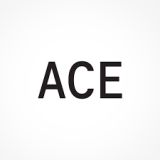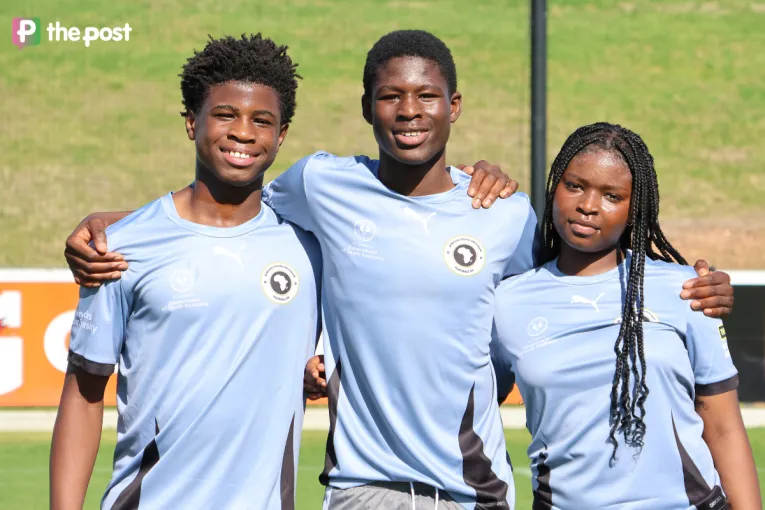Raw vision: Artists from ACE’s Studios: 2024
We check in with the artists from Adelaide Contemporary Experimental’s annual studio program to see what they’ve been up to during their year-long residencies and what they have planned.





Each year, Adelaide Contemporary Experimental’s (ACE) annual Studio Program offers fully-supported, rent-free studios and professional development opportunities to five emerging South Australian contemporary artists.
The results of the year-long residency can be seen in Studios: 2024, curated by ACE Artistic Director Danni Zuvela.
The exhibition features the many disciplines of the 2024 Studio Program artists, including painting, video, installation, assemblage and sculpture.
Here, we check in with this year’s artists to see how their practices and careers have evolved during their time at ACE.

CARLY TAKARI DODD
CM: Describe the work you’ve created for the Studios: 2024 exhibition.
C: For the Studios: 2024 exhibition, I created three large-scale necklaces and two brooches, each made from hand-stuffed tubes.
I’ve upscaled my signature weaving style, traditionally done with metallic ribbon and raffia, to use shiny satin tubes for a more opulent touch.
This work critiques the British Royal Family, exploring their fragility and the illusion of strength tied to their symbols of wealth and power.
CM: How has your ACE residency influenced the work you’ve created?
C: This residency has been amazing for expanding my practice, allowing me to create much larger works in a dedicated studio space.
Connecting with interstate and international curators has boosted my confidence in discussing my work, and I’ve found myself more open and vulnerable in sharing aspects of my practice with those I trust.
The work I create is deeply personal, so this has been a meaningful step.
There have been many early mornings and late nights at the studio and a lot of hard work and self-reflection about where I want my practice to go.
This has definitely paid off. I’m getting opportunities I never thought I would get and working with the most incredible people.
CM: How has your practice developed during your time at ACE?
C: My practice has evolved in significant ways this year, particularly with the new technique of crafting stuffed, chunky tubes to weave with.
This shift allowed me to scale up my work from the smaller ribbon and raffia pieces with ease.
The tactile nature of these larger works has created an interesting dynamic in how people engage with them.
You might like
I’ve also delved more into wearable art/design objects, earning two nominations for the National Indigenous Fashion Awards, a feature in Vogue Australia, works going down the David Jones Indigenous Fashion Projects Runway.
CM: What’s next for you?
C: Much larger works and more interstate shows—that’s all I can say for now.

ABBEY MURDOCH
CM: Describe the work you’ve created for the Studios: 2024 exhibition.
A: For this exhibition, I’ve created an installation titled TRUST. The work combines elements of film, sound, scent and sculpture to narrate some of the experiences of people living in public housing in Adelaide, more specifically Kilburn, and the deteriorating and systematically abandoned housing/ community there.
CM: How has your ACE residency influenced the work you’ve created?
A: The residency has helped me understand the weight and importance of the work that I and other studio residents make, within the context of the arts in Australia.
Being able to discuss my work with people who understand and connect with people that care as much as I do is really great.
Also having a large space to create a mess and process ideas and concepts, whilst not worrying about studio rental fees etc has made a huge impact on my practice and my life.
CM: How has your practice developed during your time at ACE?
A: I was able to let my practice bleed into all of the forms of video, sound, installation etc that I’ve wanted to explore.
I was able to just make it without constraints and let my work and research guide the way.
CM: What’s next for you?
A: I have secured the 2025 Fellowship, provided by Carclew to undertake an exciting mentorship with Melbourne artist Elvis Richardson.
This November, into 2025, I have another studio residency lined up with Washdog and Illuminate Adelaide, so I’m definitely not slowing down anytime soon!
I want to expand my projection and video explorations, more experimental sculpture, continue my research and teaching and sharing the arts with children.

MARIAN SANDBERG
CM: Describe the work you’ve created for the Studios: 2024 exhibition.
M: I’ve made a large-scale, air-powered kinetic sculpture based on an organ which was extracted from my body both physically and digitally.
The work brings together a range of hard and soft technologies, from textiles to electronics in an intertwining of bodily, physical and digital systems.
CM: How has your ACE residency influenced the work you’ve created?
M: The ACE residency nudged me into an experimental mindset, pushing my capabilities in terms of scale and ambition.
I made sure to fill every inch of this generous studio space with my work (and overflowed a bit into the corridor because I am bad at maths).
CM: How has your practice developed during your time at ACE?
M: My practice has always stemmed from my personal experience of being human in this age of technology, but this year at ACE I’ve shifted to embrace a deeper, more vulnerable and personal relationship with my work.
CM: What’s next for you?
M: I’ll be moving into another shared studio!
Next year I’ll be exploring my relationship with augmented reality through a series of 151 sculptures which will experiment with new relationships between 3d modelling and textiles.

KATEY SMOKER
CM: Describe the work you’ve created for the Studios: 2024 exhibition.
K: I have created ten paintings that reflect my experimental casting process from the past year.
Each piece examines how paint can exist independently of stretcher bars and canvas, allowing it to stand on its own.
They occupy space, creating depth and presence beyond the wall, which invites them to be viewed as objects or sculptures.
Yet, they retain the essence of paint, simply in a new form.
I’m really just asking what makes something a painting. Is it the material, the form, the canvas – or something else entirely?
CM: How has your ACE residency influenced the work you’ve created?
K: My work involves casting paint, which is labour-intensive, time-consuming and requires significant space, so having such a large studio has been invaluable. It has allowed me to fully immerse myself in my making process and provided the freedom to experiment with multiple techniques at once.
This residency also offered valuable feedback throughout the development process, encouraging me to think critically about my ideas and motivating me to play and experiment with my materials.
This led to some interesting discoveries that are now part of my work that’s currently exhibiting in the gallery.
CM: How has your practice developed during your time at ACE?
K: My time at ACE has significantly changed how I approach my practice. Having a rent-free space in the city allowed me to treat my work as a full-time profession.
The daily routine of going into the studio provided the structure, commitment and focus I needed as an emerging artist.
It’s allowed me to test my skills, challenge my thinking and refine my practice. I’ve also gained valuable insights into how organisations like ACE operate and fit into the national art scene, and I have come to recognise how important this opportunity has been for me.
I feel more secure in my work with a much clearer idea of where I want to take my practice in the future.
CM: What’s next for you?
K: I intend to take a small break after a full-on year in the studio program.
Then it’s straight back into it, as I have my first solo exhibition at Linden New Art in Melbourne next year.
I’m preparing for a group exhibition for the Adelaide Fringe, as well as delivering art classes and a workshop all in the first half of 2025.
I’m also looking forward to spending some time further developing the pieces from this exhibition to see how each of them could evolve into new bodies of work.

EMMALINE ZANELLI
CM: Describe the work you’ve created for the Studios: 2024 exhibition.
E: Magic Cave is a 6m x 4m x 2.5m (ish) network of pet cages, I think there’s about 85 cages.
They are connected to one another with mouse tunnels and decorated with a variety of small animal toys, coming together like a large factory or city.
Through the network there is a lighting system blinking and flashing at intervals. It is in a darkened space, so that it feels a bit like twilight.
The work is influenced by the BHP Olympic Dam mine site located 600km North of Tarndanya/Adelaide, and is closely connected to my short film I take care of what’s mine, currently showing at Samstag until November 29.
CM: How has your ACE residency influenced the work you’ve created?
E: Having a large studio space has led me to make a big sculpture! I feel like a turtle in a tank – how they tend to grow only in relation to their tank size.
I also think there has been encouragement from Rayleen Forester and Danni Zuvela throughout the year to experiment and push my practice in new directions.
CM: How has your practice developed during your time at ACE?
E: I don’t usually present sculptural objects as a standalone work.
Usually, I incorporate sculpture with other mediums, for example building a diorama and then photographing it, or having a sculptural object alongside photographs.
During my time at ACE, I have really stepped out of my comfort zone to build something that feels pretty ambitious for me – certainly in scale.
CM: What’s next for you?
E: In late November I’m going to get back into the dark room for a month to pick up on some RA-4 chemistry learning I started in 2021 which I am very excited about.
As for next year, I haven’t got anything concrete lined up.
Always applying for a few things, but I don’t know what 2025 will look like for me.
Studios: 2024 is showing at Adelaide Contemporary Experimental, Lion Arts Centre, 9 Nov – 14 Dec 2024.
Find more info here.








